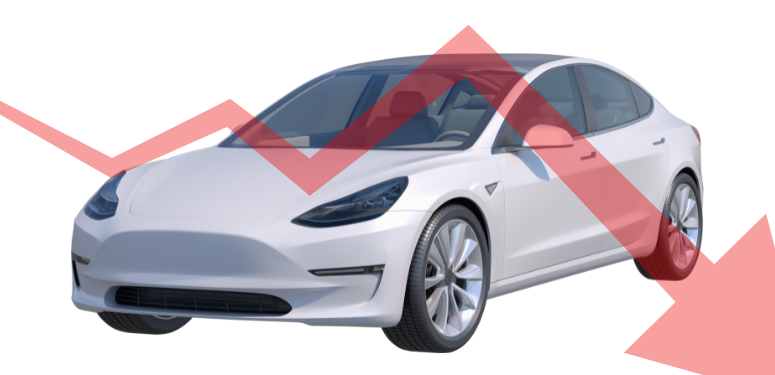By Jeff Sanford
Toronto, Ontario — January 9, 2017 — In this week’s Tuesday Ticker, some of the big trends for 2018, a good start to the year for stock markets, the meltdown in sub-prime auto-lending, and much, much more!
Stock markets have started 2018 with a bang. Last week the Dow Jones Industrial Average traded above the 25,000 point mark for the first time in history. The S&P 500 registered a positive advance every month of the calendar year in 2017. This is the first time in the 90-year history of the relevant data set that this has happened. The Nasdaq market sets its own record, closing above 7,000 on Tuesday. Few expect that market to repeat its 2017 performance – the Nasdaq was up 37 percent last year, but whatever the case, the market indices are off to a strong start.
Many fund managers are sounding a warning to investors about current valuations, which do seem stretched. One common market metric is the so-called price-to-earnings (PE) ratio. Today, one way of measuring that ratio (using ten-year averages to calculate earnings) suggests that markets are over-valued and in a way that is similar to 1929 and the mid-2000s – or just before the Great Depression and Great Recession. Other market analysts point out that the difference between the yield on a 10-year bond and a 2-year bond has decreased to about 0.5. In the past that kind of a compression (down from 2.5 or 3 at other times) is a predictor of recessions. Prudently, many fund managers are preaching caution in terms of market exposure. That is solid advice.
On the other hand, there is good reason for optimism. Market analysts credited the recent record highs in U.S. stock markets on a strong monthly jobs report. Employment growth is, arguably, the best indicator of real and solid economic growth, so perhaps there is a reason for optimism.
North of the border, surveys suggest that the Canadian TSX Composite Index will advance a gentle 4.4 percent in 2018, down from a six percent gain in 2017. It would also trail the advances expected on most global indices.
Within the collision repair sector, shares of Boyd Group Income Fund had another great year. With the stock rising from a low of $82 a share in February to $100 at the start of 2018. The increase caps a long period of outsized growth for the Winnipeg-based company, which has become one of the leading collision repair centre chains on the continent. Shares in Boyd were trading under $50 as recently 2015, and in 2013, shares were went low as $12 a share – no wonder the stock has become investor favourite.
A new carbon tax in Alberta came into effect on New Year’s Day. The tax, $30 per tonne, will add 6.73 cents per litre to the cost of gasoline. Even with the new levy, Alberta motorists will pay less tax than Canadians in other provinces.
Vancouver residents will pay the most in the year ahead according to the GasBuddy Fuel Price Outlook. Residents of that city will pay between $1.46 to $1.52. Toronto residents will pay $1.29 to $1.35 per litre. Overall the average cost for gasoline in Canada in 2018 will be up at $1.19 per litre.
Could a rising price of crude oil send the price of gasoline even higher in the years to come? Sure. The talk about another spike in the price of crude oil (similar to the one in 2007) continues to bubble up. Some analysts are now predicting prices could spike again to $100 a barrel by the 2020s, a price that would likely stall the economy.
When the price of crude spiked to almost $150 a barrel in the summer of 2007, gasoline was selling at as much as $4 a gallon in the U.S. And $3 a litre here in Canada. As consumers put more in the tank there was less money leftover for consumer items. Retailers suffered. In the U.S. securities based on home loans given to people with less than prime credit ratings suddenly less money to put toward those mortgages. The market in mortgage-based securities melted down. Major banks shuddered and collapsed. The stock market plunged.
In the decade up to that time the price of a barrel of crude oil had risen steadily from $15 a barrel in 1998 to almost $150 in 2008. There were two reasons for the spike – on one hand, the global production of crude oil was slowing, and the Chinese and Indian economies were heating up at an unprecedented pace. With production in the North Sea oil fields and in Mexico in decline and depletion rates increasing, the demand in emerging economies was rising precipitously. As demand rose and production stalled, prices spiked. Like a dark cloud on a grey day, the Great Recession settled in.
In the years after 2008 demand for oil tempered as new production came online. The high price of crude allowed a flood of new unconventional oil fields – like the shale basins in America – to begin extration. Expensive ultra-deepwater wells off Brazil were drilled as well. As the economy slowed, demand dropped. The price of a barrel of crude plunged to just $40 a barrel by 2015.
But might the world already be working through that period of improved production and lower demand? Now, a couple years on from 2015, some are beginning to argue that the oil story is about to change again.
The International Energy Association (IEA), a Paris-based group that analyzes energy trends for OECD countries, recently issued a warning about the remarkably low levels of investment in the oil industry. When the price of crude fell to $40 a barrel in 2015, oil companies cut their budgets for investment in new production by billions of dollars. At that price they didn’t have the cash to go ahead with big expensive projects.
Global oil discoveries fell to a record low in 2016. According to the IEA, the rate of new crude development is remarkably low by historical standards – not since the 1940s has new development been so low. Added to this, new shale production will come online in the United States, but it won’t offset depletion. The ultra-deepwater wells of Brazil turned up far less than expected. Production in Mexico continues to decline, as is the case in Venezuela, where some think production in some fields could decline as much as 30 percent next year (as that nation suffers an economic collapse due to low prices).
China and India continues to race ahead. India is importing 40 percent more crude than it was two years ago. That demand is expected to continue to rise in the years ahead. All in, the global oil market is set to return to that place where it was in the mid-2000s – production will begin to lag, demand will continue. The price of oil will spike again.
“We are worried about historically low discoveries and new projects,” the oft-quoted and well-known executive director of the IEA, Fatih Birol, was quoted as saying. The Rapidan Group, a Washington-based energy policy advisory firm, recently suggested oil prices could hit $100 a barrel in 2022. Stronger-than-expected demand and production lags will combine to cause another spike.
“If you put those two things together, then you get a boom phase,” the president of the Rapidan Group was quoted as saying.
Could used cars be more popular in 2018? That is a solid bet. Central banks are generally thought to be getting ready to raise interest rates in the year ahead. The U.S. central bank, the Federal Reserve, just raised interest rates a quarter percent in December – the third hike in 2017.
The moves are small and for most people looking to borrow, that will not matter. Car buyers with an outstanding credit rating would see the monthly cost of a lease on an average new car increase by only $4.
Down in the sub-prime sector, where consumers have a credit ratings below 600, the price of borrowing has just skyrocketed. According to an economist from Cox Automotive, car buyers with sub-prime credit ratings were paying 5.91 percent on a lease. That interest has now jumped to 16.84 percent today – or about $100 on a monthly lease rate of $500.
For this reason, many think the sale of used cars will pick up in 2018 as the sales of new cars slow. After all, of the $1.2 trillion in outstanding auto loans in the U.S. about a quarter of that ($282 billion) is lent to sub-prime borrowers.





































